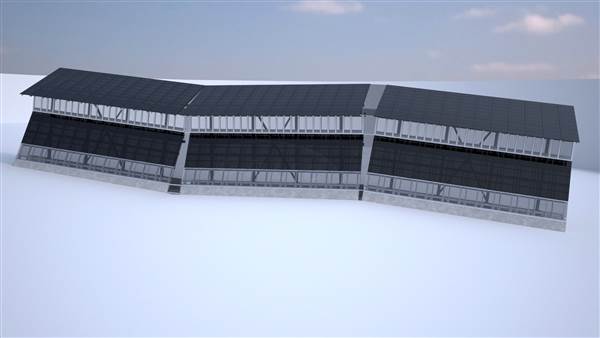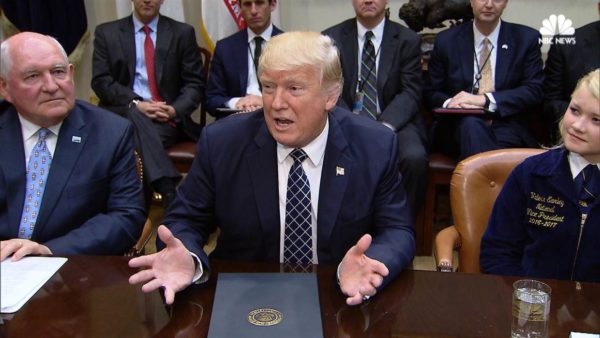According to NBC News, amid the fallout of the United States’ withdrawal from the Paris climate agreement, President Donald Trump on Tuesday appeared to embrace an environmentally-friendly solution to what he calls the country’s immigration crisis: Suggesting that solar panels could cover his border wall, two government sources told NBC News. Trump floated the idea during a meeting with congressional leaders at the White House, a congressional source said on condition of anonymity.
According to the source, Trump said he’d like Congress to discuss the idea — but only if lawmakers give him the credit for it. The president’s suggestion was first reported by the political news website Axios, an NBC News media partner. According to Axios, “Trump told the lawmakers they could talk about the solar-paneled wall as long as they said it was his idea.”

A Nevada company has already submitted a formal proposal to build a U.S.-Mexican border wall covered with solar panels to generate electricity to pay for the project (Photo: NBC News)
In March, the Trump administration published two requests for proposals to build as much as 1,900 miles of wall along the U.S.-Mexican border, specifying that it should be “physically imposing” — at least 30 feet tall and extending at least 6 feet below ground, with no nooks, crannies or other potential handholds for climbers. A solar wall isn’t a new idea. Homero Aridjis, an environmental artist, and James Ramey, a professor at Metropolitan Autonomous University-Cuajimalpa in Mexico City, proposed the idea in December. “Mexico and the U.S. would be connected by a truly beautiful wall — a symbol of unity, visible even from space,” they wrote.
Thomas Gleason of North Las Vegas, Nevada, is also a fan of a solar wall — so much so that his company, Gleason Partners LLC, submitted a formal proposal to build it. “We proposed a wall that pays for itself, and it looks pretty darned nice,” Gleason told NBC affiliate KSNV of Las Vegas when he turned in the proposal in April. He said the project could pay for itself in about five years.
There’s no real way to verify that projection, because no final design has been picked and because electricity prices vary significantly depending on region and conditions. For example, the federal Energy Information Administration reported that in the southwestern United States, where the wall would be built, average wholesale prices for electricity ranged as low as $30 to as high as $50 per megawatt-hour in March, the last month for which full figures were available.
There’s no consensus on how much it would cost to build the wall in the first place. A report by the Department of Homeland Security in February put the cost at about $21.6 billion over three years. However, Senate Democrats threw scorn on that estimate. In April, they released a report estimating that a wall as envisioned by Trump would cost about $70 billion just to build — and $150 million a year more to maintain.
SOURCE: NBC News


